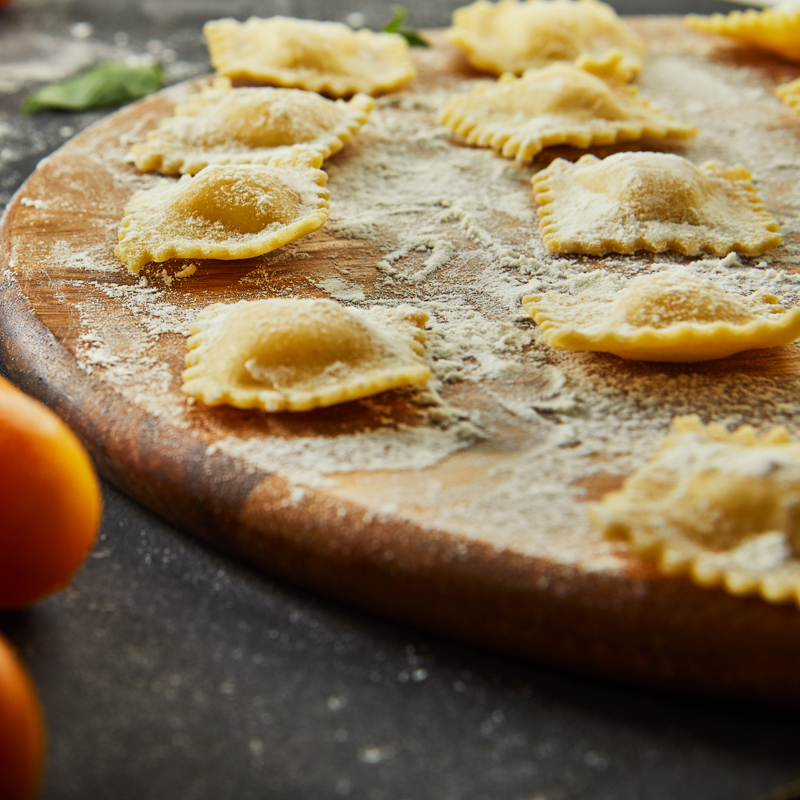
100 gr |
-- |
|
|---|---|---|
| Carbohydrate (gr) | 15.04 |
4928.47 |
| Protein (gr) | 3.59 |
1176.23 |
| Fat (gr) | 12.46 |
4083.43 |
| Fiber (gr) | 1.36 |
445.97 |
| Cholesterol (mg) | 14.64 |
4795.8 |
| Sodium (mg) | 325.27 |
106557.75 |
| Potassium (mg) | 392.16 |
128471.4 |
| Calcium (mg) | 78.15 |
25603.27 |
| Vitamin A (mg) | 46.04 |
15084.01 |
| Vitamin C (mg) | 6.16 |
2019.31 |
| Iron | 0.62 |
203.1 |
Ravioli is a type of small, pillow-shaped Italian pasta, traditionally filled with a variety of ingredients such as cheese, meat, or vegetables. These delightful parcels are typically square or round and are celebrated for their versatility in both filling and preparation methods.
The calorie of ravioli pasta is 91 calories per 100 grams.
Ravioli is a classic dish from Italian cuisine, where thin sheets of pasta dough encase flavorful fillings. The origins of ravioli date back to the 14th century, with regional variations appearing across Italy. This dish has since become a favorite worldwide, enjoyed in countless forms.
The beauty of ravioli lies in its adaptability. Common fillings include:
Ravioli is a versatile dish that can be served with various sauces to suit different tastes. Common pairings include:
While traditionally Italian, ravioli has inspired similar dishes in other cuisines:
Ravioli is more than just a dish—it’s a culinary canvas that reflects creativity and tradition. Whether stuffed with classic ricotta and spinach or innovative gourmet fillings, ravioli continues to captivate palates worldwide.